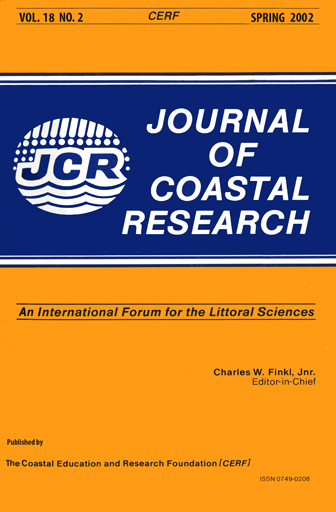Over-Estimation of Sea Level Measurements Arising From Water Density Anomalies Within Tide-Wells-A Case Study at Zuari Estuary, Goa
Keywords:
Global climate, MSL, guided air-acoustic gauges, rainfall, wind, monsoonAbstract
A 3-year study of water density anomalies within a conventional tide-well indicated that the average water density within the well was consistently lower than that of the external ambient waters. The tide-well at Marrnugao, Goa, India is situated at the mouth of the Zuari estuary, and anomalies were reported at all periods except during peak summer and the onset of the summer monsoon. These anomalies lead to an over-estimation of sea level by a tidewell based gauge. We observed that the density difference, Δp, between waters inside and outside of the tide-well had a significant dependence on local rainfall and wind. This trend was noticed throughout the 3 years observation period, with the minimum (0.001g cm-3) difference corresponding to maximum (~6 m s-1) winds and maximum (~350 mm) rainfall. The monthly-mean over-estimation in sea level (Δh), was a minimum (2 mm) during the summer monsoon, rose rapidly to over 22 mm after the monsoon, and remained around this peak value for ~3 months before slowly decreasing to ~4 mm by peak summer. The yearly-mean over-estimation in the mean sea level (MSL) was 11.3 mm. The limitation of the conventional tide-well could be minimized by incorporation of arrays of perforations on its entire submerged portion. Density measurements during different seasons indicated that these perforations gave rise to good mixing between the waters within and outside of the tide-well, thereby improving the accuracy in sea level measurement. The large number of gauges worldwide that are situated in similar estuarine conditions would have contributed to inaccuracies in the climatology in the sea level records, and this area needs to be addressed. The observed annual repeatability of the density difference pattern indicates that it might be possible to correct the historical sea level records, obtained from tide-well-based gauges, for the observed systematic over-estimation of sea levels, from measurements of density differences inside and outside of tide-wells over a period of one year. This would be a practical way to go back to what is in the archives and recover the absolute sea level. In this paper we have also addressed a feasible solution to the lower density water-trapping problem suffered by the guided-air-acoustic gauges, wherein a long and narrow tube is used to guide the acoustic pulse between the acoustic head and the water surface.


